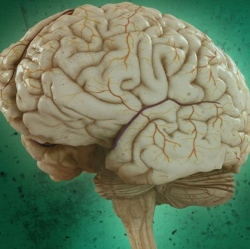
Virginia Tech Carilion Research Institute have found that ultrasound directed to a specific region of the brain can boost performance in sensory discrimination. The study provides the first demonstration that low-intensity, transcranial-focused ultrasound can modulate human brain activity to enhance perception.
“Ultrasound has great potential for bringing unprecedented resolution to the growing trend of mapping the human brain’s connectivity,” said William “Jamie” Tyler, an assistant professor at the Virginia Tech Carilion Research Institute, who led the study. “So we decided to look at the effects of ultrasound on the region of the brain responsible for processing tactile sensory inputs.”
Testing effects of ultrasound on processing tactile stimulation
The scientists delivered focused ultrasound to an area of the cerebral cortex that processes sensory information received from the hand — the human primary somatosensory cortex (S1).
To stimulate the median nerve — a major nerve that runs down the arm and the only one that passes through the carpal tunnel — they placed a small electrode on the wrist of human volunteers and recorded their brain responses using electroencephalography, or EEG. Then, just before stimulating the nerve, they began delivering ultrasound to the targeted brain region.
